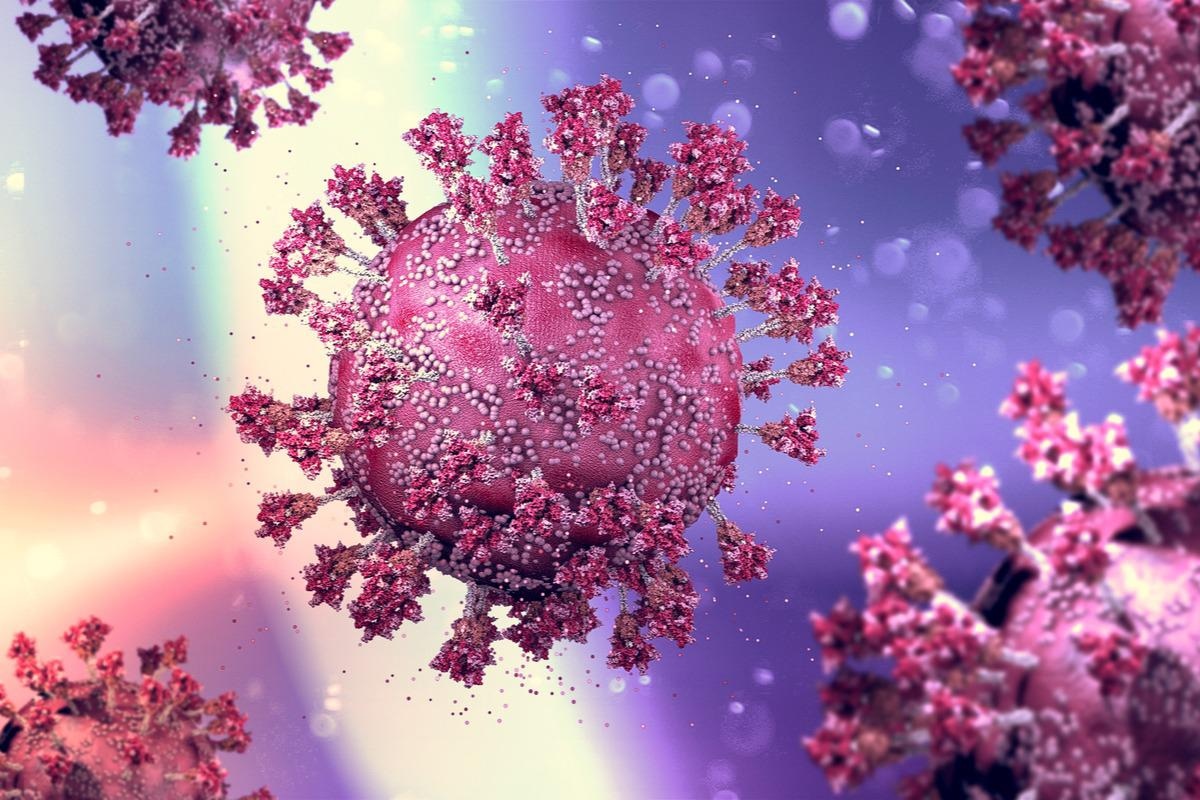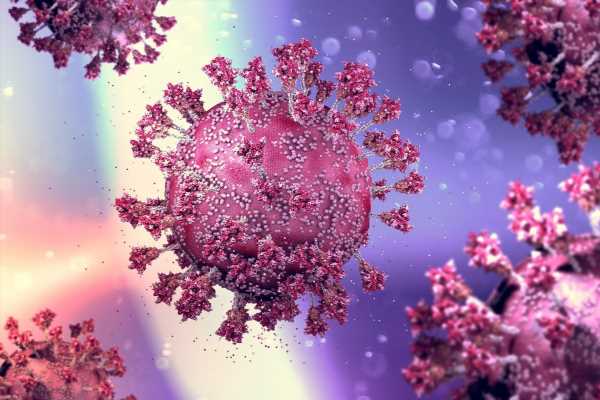In a recent study posted to the bioRxiv* pre-print server, a team of researchers used cryo-electron microscopy (cryo-EM) to determine the spike (S) structures of the severe acute respiratory syndrome coronavirus 2 (SARS-CoV-2) Omicron variant to understand how the mutations that alter its primary sequence impact S conformation.
 Study: Structural diversity of the SARS-CoV-2 Omicron spike. Image Credit: Naeblys/Shutterstock
Study: Structural diversity of the SARS-CoV-2 Omicron spike. Image Credit: Naeblys/Shutterstock
The Omicron S protein has mutations in its receptor-binding S1-subunit and its fusion subunit S2. The S2 subunit is conformationally stable before the receptor binding event; the S1 subunit, on the other hand, with its mobile N-terminal domain (NTD) and receptor-binding domain (RBD), is innately predisposed to conformational changes.
The RBD transitions between a closed (down) state where the angiotensin-converting enzyme 2 (ACE2) binding site is blocked and an open (up) states that exposes the ACE2 biding site. Following receptor binding and proteolytic processing, the S2 subunit undergoes conformational changes that release the fusion peptide (FP) to mediate the fusion of the virus and host-cell membranes.
In addition, RBD dynamics are impacted by interprotomer RBD-to-RBD and RBD-to-NTD contacts by the SD1 and SD2 subdomains and the “N2R (NTD-to-RBD) linker” within a protomer.
Structural studies using an S-GSAS platform that did not contain any extraneous stabilizing mutations in the S2 subunit helped visualize S protein conformations in its native format and illustrate a diverse repertoire of structural states of the Omicron S.
About the study
Previously, the authors of this study had described how SARS-CoV-2 variants of concern (VOCs) modulate the S1 subunit interactions to alter the S protein RBD presentation and ways to exploit the same for immunogen design.
In the present study, the researchers determined the native Omicron and Delta S proteins to understand how mutations alter the conformational states and influence S RBD and antibody (Ab) epitope presentation.
More specifically, they determined structures of 3-RBD-down, 1-RBD-up, and 2-RBD-up populations of the Omicron and Delta S ectodomains.
Findings
The domain organization of Omicron S was significantly different compared to other variants, as observed in the structural studies, and quantified using sets of intra- and inter-protomer vectors.
The Omicron S protein displayed reduced S1 variability with many of its 16 immune-evasive RBD amino acid mutations stabilizing the RBD-RBD interfaces, which also stabilized 1-RBD-up states in a manner not observed in the Delta S. Omicron S showed a closely packed RBD-RBD interface in the 3-RBD-down conformation distinct from the other SARS-CoV-2 variants and an RBD loop harboring the S371L, S373P and S375F mutations in one protomer mediated new interprotomer interactions, and a Y505H mutation was observed in the adjacent interacting protomer. This rearrangement was also identified in the Delta VOC and other variants but was comparatively rare in them.
SARS-CoV-2 VOCs that dominated before Omicron, such as the Delta variant, maximized transmissibility by favoring open-S states and mutated Ab epitopes for immune evasion. Omicron’s S acquired RBD-down state stabilizing mutations that sealed highly immunogenic sites that bound potent Abs bolstered its immune-evasion ability.
In addition, the authors speculated that structurally, Omicron S could have achieved high transmissibility by taking one of the two routes. First, locking down the mobile RBDs would have resulted in a metastable S with rearrangements in the peptide N2R linker (connecting the NTD and RBD in a protomer). Second, the researchers combined binding assays, X-ray crystallography, and cryo-EM to unveil altered plasticity of the FP in the Omicron S compared to other variants, including Delta. Despite extensive stabilization, the functionally critical FP of the Omicron S was more easily exposed.
Relative to the Delta S, a weaker binding of Omicron S protein to 2G12 and other Fabdimerized glycan-reactive (FDG) Abs that targeted a quaternary S2 glycan cluster, as well as by enhanced binding to FP directed Ab DH1058, suggested altered S2 conformational dynamics. A high-resolution crystal structure of the FP-Ab complex suggested enhanced FP dynamics may be associated with Omicron’s increased transmissibility.
Conclusions
The increased Omicron transmissibility could be due to the combined effect of the ease of accessing the RBD-up state, sustained affinity for ACE2 interactions despite multiple mutations in the RBD region, and the more ready release of the FP. The results also indicated the Omicron S evolved beyond immune evasion toward a compact architecture with well-regulated fusion machinery and altered FP dynamics.
To conclude, future studies should closely monitor the continued evolution of the structure of future variants on the Omicron template to achieve a deep understanding of Omicron biology and in anticipation of the immune escape potential of the future VOCs.
*Important notice
bioRxiv publishes preliminary scientific reports that are not peer-reviewed and, therefore, should not be regarded as conclusive, guide clinical practice/health-related behavior, or treated as established information.
- Sophie Gobeil, et al. (2022). Structural diversity of the SARS-CoV-2 Omicron spike. bioRxiv. doi: https://doi.org/10.1101/2022.01.25.477784 https://www.biorxiv.org/content/10.1101/2022.01.25.477784v1
Posted in: Medical Science News | Medical Research News | Disease/Infection News
Tags: ACE2, Amino Acid, Angiotensin, Angiotensin-Converting Enzyme 2, Antibody, Cell, Coronavirus, Coronavirus Disease COVID-19, Crystallography, Electron, Electron Microscopy, Enzyme, Evolution, Glycan, Microscopy, Mutation, Omicron, Protein, Receptor, Respiratory, SARS, SARS-CoV-2, Severe Acute Respiratory, Severe Acute Respiratory Syndrome, Syndrome, Virus, X-Ray

Written by
Neha Mathur
Neha Mathur has a Master’s degree in Biotechnology and extensive experience in digital marketing. She is passionate about reading and music. When she is not working, Neha likes to cook and travel.
Source: Read Full Article
